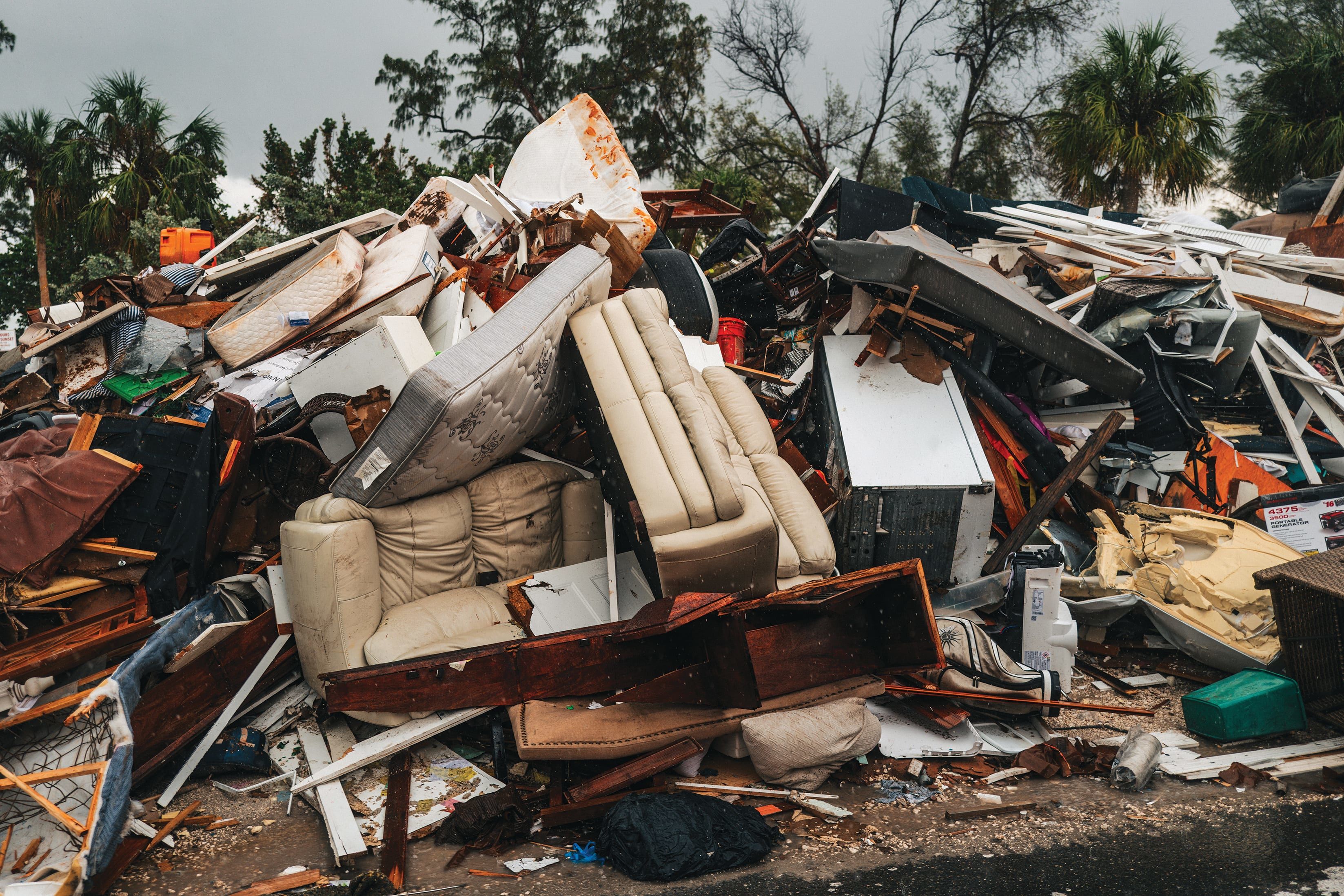
Local Residents and Business Owners Pick Up the Pieces After a Catastrophic Hurricane Season
Our barrier islands have long been a beachy postcard paradise for locals and visitors alike. But in the aftermath of Hurricanes Helene and Milton, paradise has been put to the test.
Hurricane Helene was the first to strike. Despite being more than 100 miles offshore when it passed our region, its historic storm surge flooded homes and streets with such force that it reopened Midnight Pass on Siesta Key and turned waterfront communities upside down. It left cars, furniture and appliances littering the streets as floodwaters receded.

Image: Everett Dennison
Then, less than two weeks later, Hurricane Milton delivered a second blow, making landfall on Siesta Key. Milton’s 120-mile-per-hour winds tore through what was left in Helene’s wake, snapping trees, pulling down power lines and smashing boats into docks or even lifting them out of the water and shoving them onto nearby land. Sarasota Bradenton International Airport had its roof ripped off, and nearly the entire area was left without power.
“You jump the first hurdle, then get a giant kick to the gut,” says Siesta Key resident Ross Schilling. “That’s what’s been so traumatizing.”
Schilling owns a handful of short-term rentals, including Lulu’s Key House on Siesta. He saw Helene’s storm surge breach the island’s Heron Lagoon and flood his own home. His garages were inundated, ruining three cars, and his game room and pool were destroyed. “The water flowed around the house like rapids,” he says. Milton added insult to injury, as boats tore up his dock and debris from Helene battered his home’s exterior.
After Milton, Siesta looked like a “zombie apocalypse,” says Schilling. Bridges to the island were closed to cars, forcing residents to walk across, dazed by the destruction they witnessed. “The beach was deserted, except for flocks of birds—limping seagulls with broken wings, pelicans lying on the beach, too tired or wounded to fly,” Schilling says.
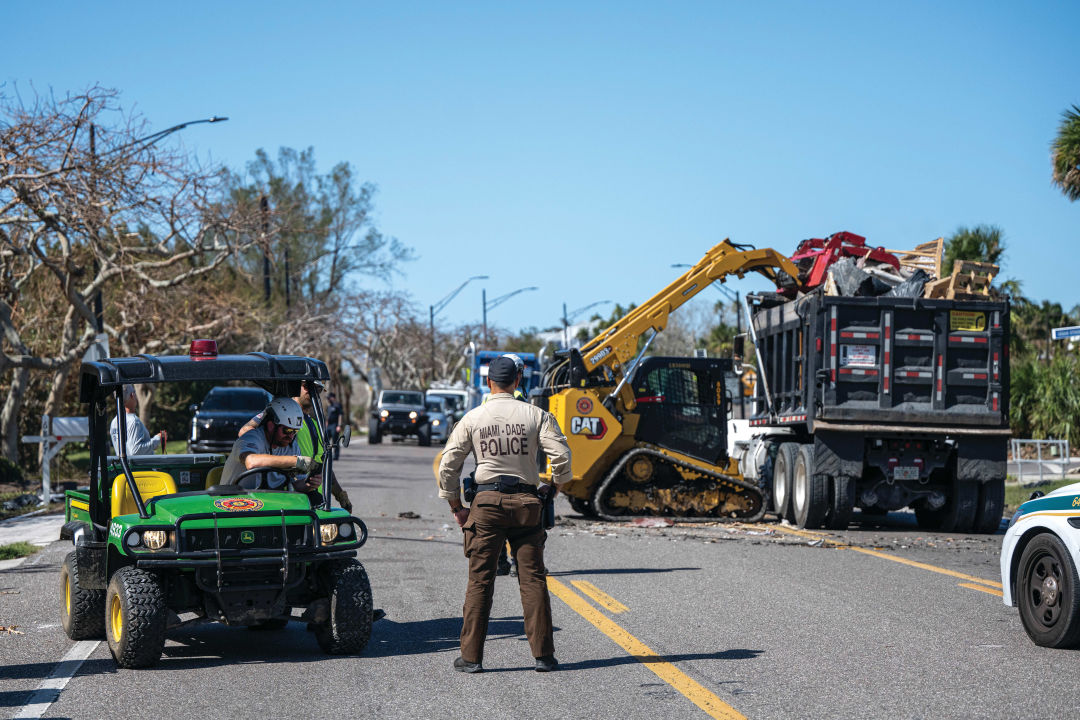
Image: Everett Dennison
Ashley Petrone lives on Longboat Key and owns Joie Inn on Anna Maria Island and Fox Mercantile on the mainland, in Cortez. Like many, she was blindsided by the force of Helene’s storm surge, which flooded Fox Mercantile, a shop and café, with 4 feet of water. “We were stunned,” she says. “We’d put appliances on cinder blocks after previous floods, but nothing could have prepared us for what we faced this time.”
After Helene, Petrone and her husband were determined to rebuild and began water remediation—but then came Milton. Though it brought less flooding (only 3 or 4 inches), the storm was still strong enough to undo all their efforts. “Even if it’s inches versus 4 feet, it’s the same work all over again,” says Petrone. Milton’s winds felled an old oak tree that had anchored the outdoor space at Fox Mercantile, bringing down a power line and blocking the street. Shortly afterward, the scene was used as a backdrop on NBC’s Today Show to illustrate Milton’s destructive force.
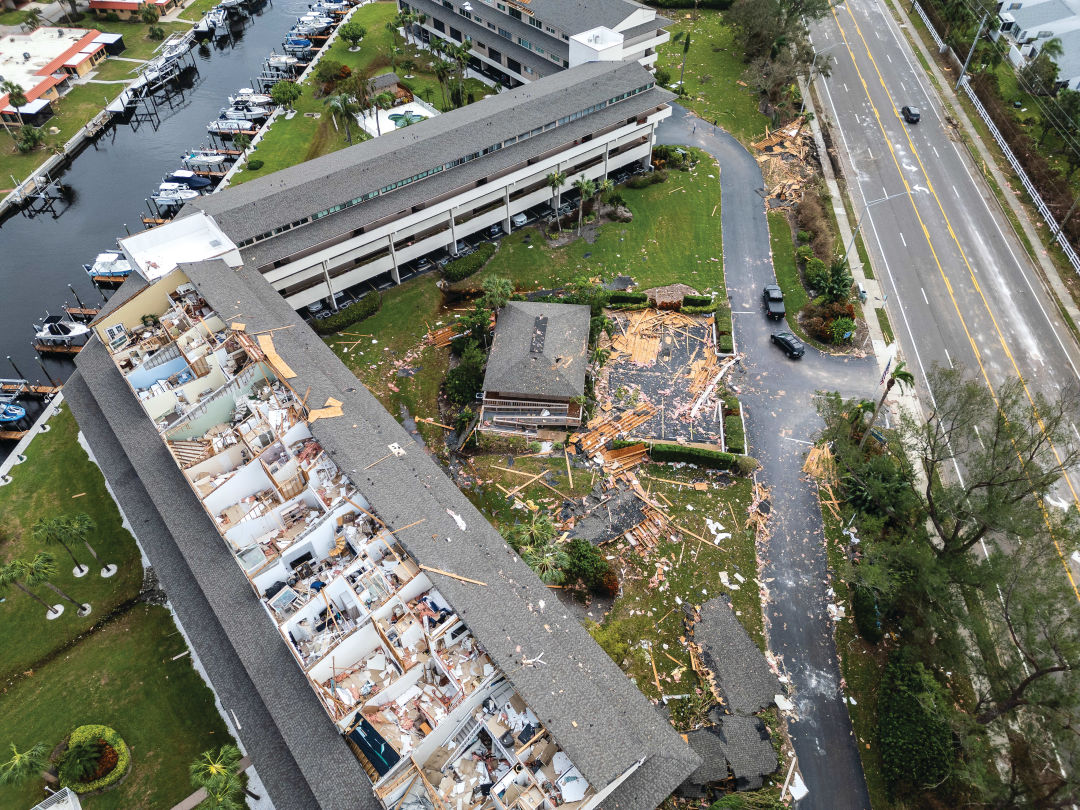
Image: Hannah Trombly
The financial toll has been immense. “We were so devastated from Helene that we rented a U-Haul and moved all our inventory and our espresso machine into it for Milton because we couldn’t afford to lose more,” says Petrone.
Her store has now flooded five times in a year, and each recovery has been more difficult. “If we had the money, we’d tear it down and build something that won’t flood,” she says. “But we’ve never been able to get ahead due to repeated floods, even before these hurricanes. It costs about $50,000 to come back from one.”
Amid the chaos, Petrone found solace in her community as neighbors and customers rallied to help clean up. “There was good stuff, too,” she says. “The community is incredible. There’s no politics, no past tensions. Everyone is experiencing this together.” One morning, someone brought breakfast burritos. “I don’t even know who they were,” she says.
Petrone remains hopeful. “We want to push to open, at least for coffee, at Fox Mercantile, since that’s a gathering point for us,” she says. “The inn will take more time.” But like many other residents, she is grappling with hard decisions about the future. “I love our location and community, but at what point do I look like an idiot and keep going through this?” she asks. “It’s hard to make decisions right now, and we need to fix and rebuild no matter whether we stay or go.”
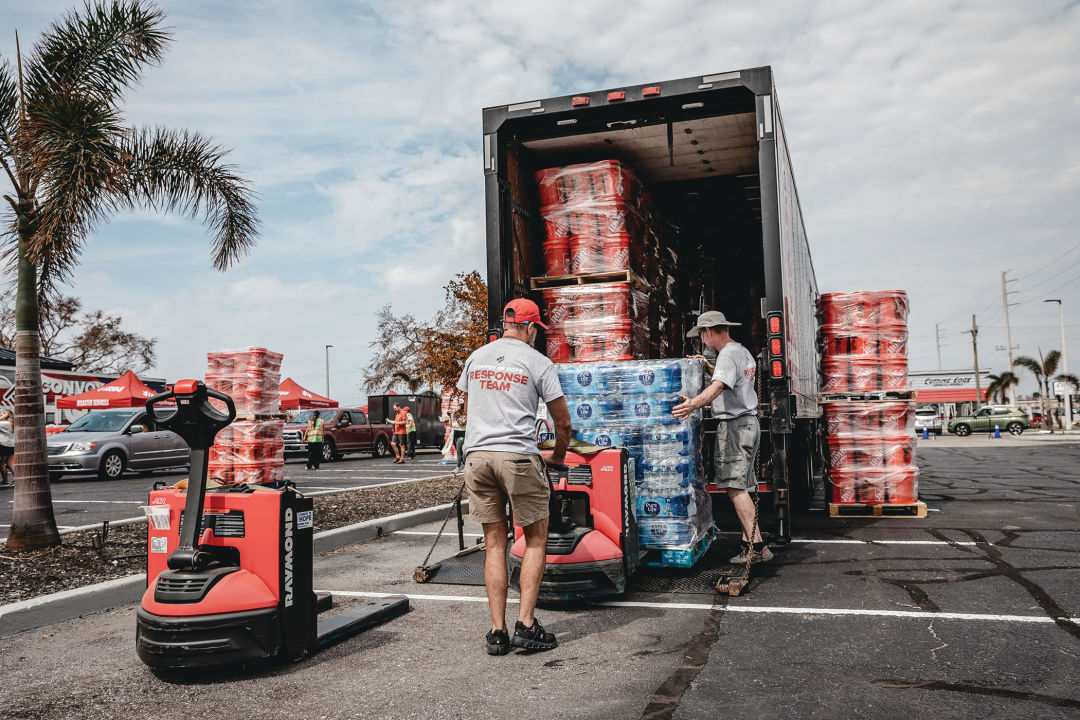
Image: Hannah Trombly
Shawn Kaleta, a prolific local investor and developer, is also focused on rebuilding. Kaleta owns Prime Vacations and approximately 1,100 vacation rental units across the barrier islands, as well as iconic local businesses like the fine dining destination Beach Bistro on Anna Maria Island. Helene left 5 to 6 feet of sand inside the restaurant, but Kaleta is confident that recovery will be swift. “I think the season will be unaffected for 2025 because we’ll be up and running by the end of the year,” he says. “In the short term, anything on the first level of most places is destroyed, but our area will recover quickly. We just need to help each other and work together.”
Some of Kaleta’s properties—like the Bali Hai Beach Resort on Anna Maria Island—have already reopened to house first responders, and his employees are working to get everything back in order.
“This is my passion,” he says. “It’s time to lead by example and work with staff and residents to come back as soon as possible. We have roughly 5,000 employees, and no one will be laid off.”
Kaleta hasn’t yet weighed his economic losses. “I haven’t even thought of the financial side of this, but it’s going to be significant,” he says. “Right now, we’re focused on rebuilding.”
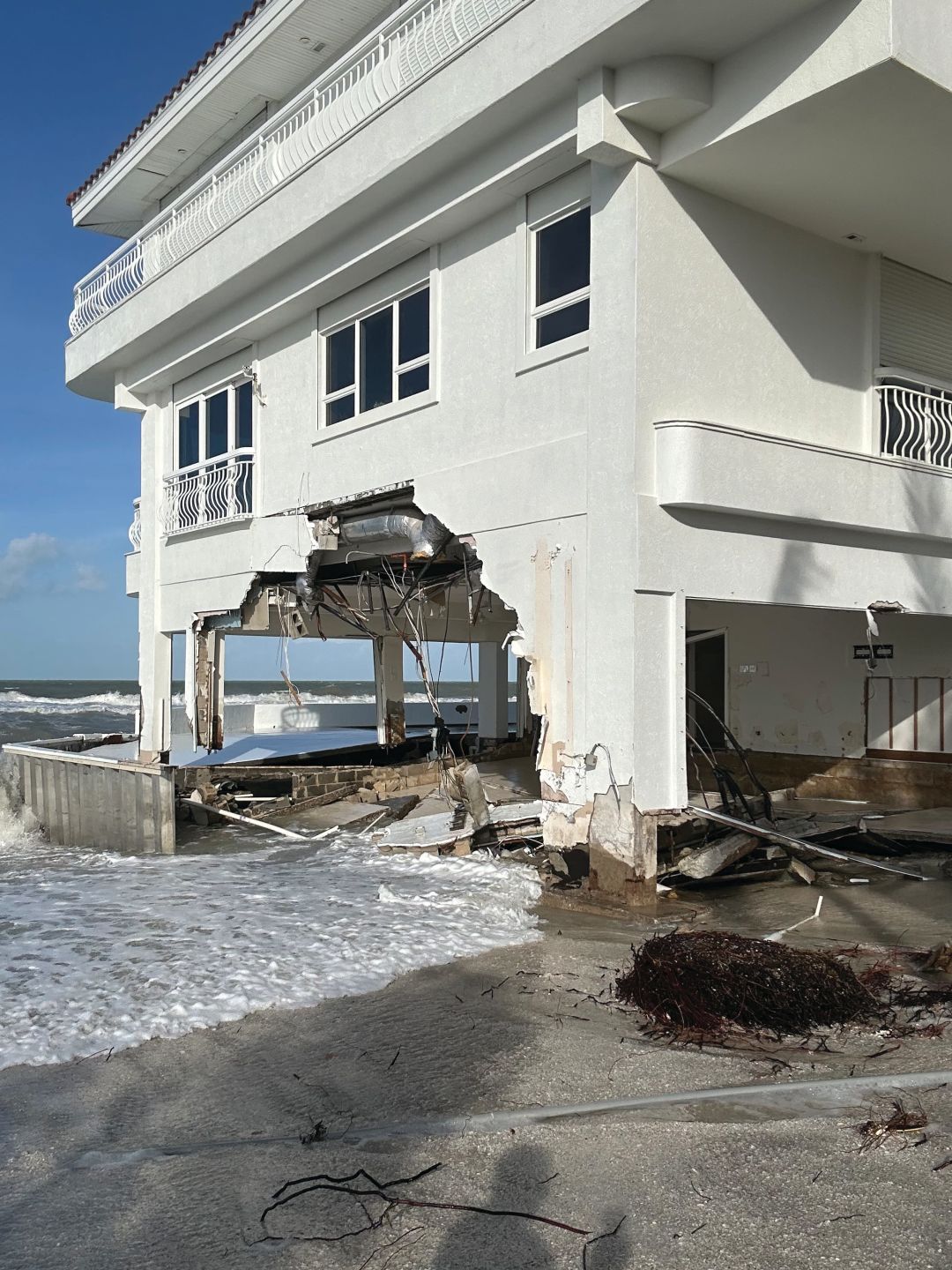
Image: Courtesy Photo
That sentiment is echoed by Greg Dunley, a lifelong resident of Casey Key and the owner of Raised Here Charters, a charter fishing company. Dunley’s family has owned a small beach house on the key since the 1970s, but Helene’s storm surge dumped 8 feet of sand into the property, rendering it unrecognizable. “The waves broke across the street, from Gulf to bay,” he says. “The sand was so high I could step up on the roof.” He and his neighbors began clearing the sand, only to have their efforts erased by Milton’s winds and surge, which brought debris from destroyed docks, decks and homes.
Still, Dunley remains committed to his home. “The ocean is our life,” he says. “The joy and beauty of the ocean come with bad weather sometimes. But if you live on the water, you should know that. Most people I’ve talked to understand that. It seems to me that most are eager to fix their piece of paradise and move on. We’re in it together. We will rebuild.”
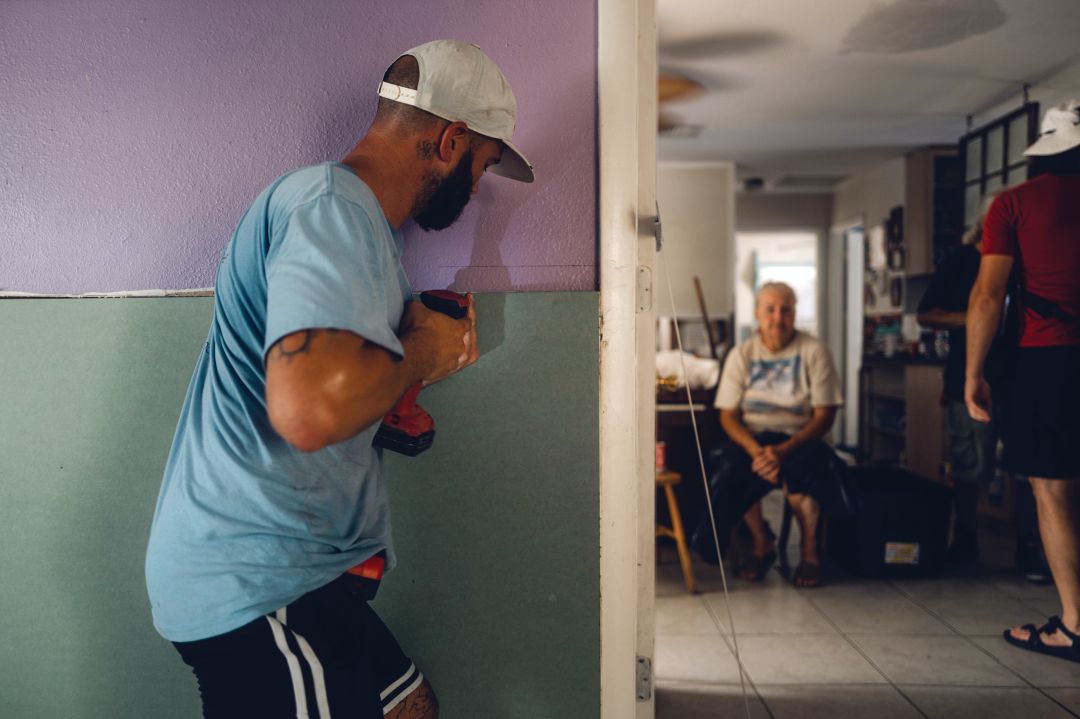
Image: Everett Dennison
Lourdes Ramirez, who has lived on Siesta Key for 25 years, says Helene brought “a rotted smell everywhere,” with a lingering stench of dead fish that washed ashore during the storm. Her home was flooded with 3 feet of water, wrecking the kitchen, bathrooms and two cars. After sandbagging her property, she thought she was prepared, but Helene’s surge caught her off guard. “We hardly had any rain, but the storm surge was something we didn’t expect,” she says.
Milton added to the damage, pushing Helene’s leftover debris against her garage and soaking the exposed studs under the drywall that had been cut out during rapid recovery efforts after Helene. “Now we have to start all over,” says Ramirez, who estimates that it could take six months to recover. “I don’t think Milton will delay rebuilding much since we already had so much to do after Helene, but it’s going to be a long process,” she says.
A vocal advocate for protecting Siesta Key from the construction of big new hotels, Ramirez views Helene as evidence for why such developments should be avoided. “I’ve been trying to educate the public about the effects of a hurricane on hundreds of potential hotel guests who try to evacuate,” she says. “Now we have the case study. It’s not just a hypothetical.”
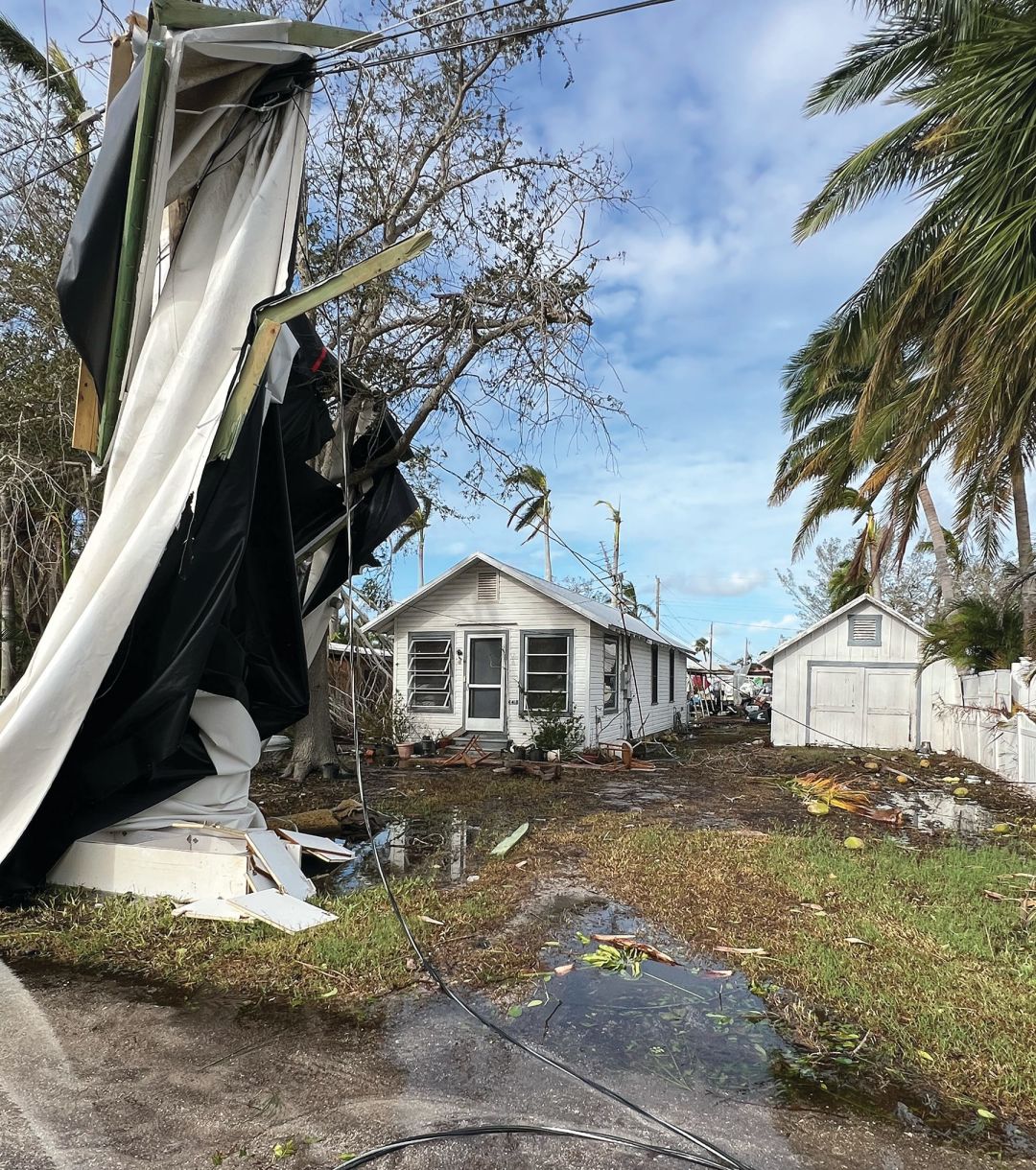
Image: Gigi Ortwein
Both the emotional and financial toll of the back-to-back hurricanes has been immense. Rental properties, which help form the backbone of the local economy, have been hit hard. “The economic impact will be significant,” says Ramirez. “Most Siesta Key residents I’ve talked to say their houses are uninhabitable, and we account for roughly 31 percent of tourist tax collections. To be out of commission for this long will take a toll.”
Of her own home, she says, “All of my favorite things are gone. I have my moments. I burst into tears.” What helps? “Doing,” she says. “I still have to see what I can salvage. I have tons of laundry to do. I have to keep up the momentum.”
Amid the jarring impact of this year’s hurricane season, tales of resilience and community shine through. Neighbors are helping neighbors, and most are focused on rebuilding together. “We’re all woven together right now,” says Kaleta. “Every day, things are happening, and it’s all adding up fast. It’s hard, but we’re getting through it together.”